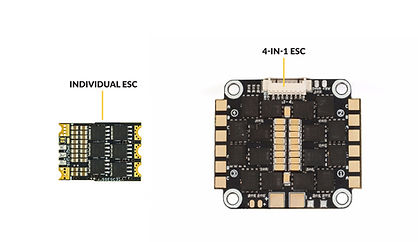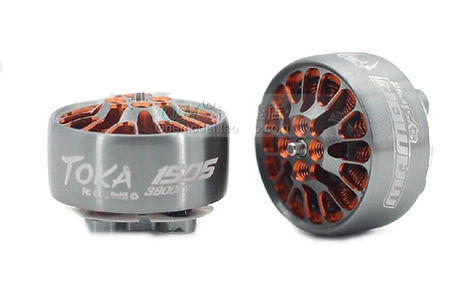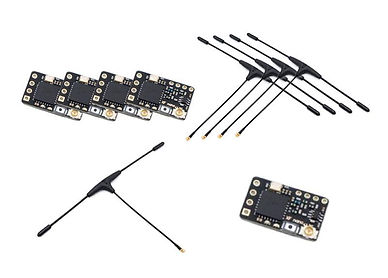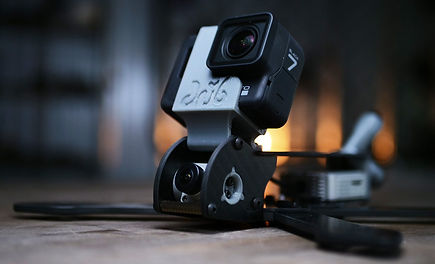FPV (First Person View)
The first thing to note is that FPV does not describe the drone, it describes the method of flying the drone. As opposed to the traditional method where the pilot controls the drone from their perspective on the ground, FPV drones are piloted from the drone's point of view.


Components
-
Frames
-
Flight Controllers
-
ESC's (Electronic Speed Control)
-
Motors
-
Propellers
-
Receiver
-
Transmitter (Remote)
-
Flight Camera
-
VTX (Video Transmitter)
-
Goggles
-
Battery

Frame
This is the part of the drone which holds everything together. These are usually made out of Carbon Fiber. Combined with metal, plastic or 3D printed parts. The frame of the drone needs to be durable enough to withstand crashes. Crashes are something that tend to happen frequently. The frame needs to be easy to work with which means there should be easy access to electronics. This is to make the repairs quick and easy.



Flight Controllers
The flight controller also known as FC is the central connecting part of the drone. It is also known as the brain of the drone and communicates with all the other devices on the drone.
The FC is responsible for processing the inputs given by the pilot and converting it into separate instructions for each motor on the drone. It has a sensor called the gyroscope which helps it retain its orientation.
Some of the flight controllers are capable of providing On Screen Display of the flight conditions such as pitch angle, battery voltage etc.

ESC's
The ESC which stands for electronic speed control. This device is responsible for the smooth and reliable running of the motors at a range of different speeds.
A motor usually requires its own individual ESC. However, there is a change in trends where 4 ESC's are placed on a single device.



Motors
The motors are the devices which help the propeller to spin. Usually the motors used in this hobby are known as brushless motors. These motors are capable of spinning up to thousands of revolutions per minute.
The motors require very accurate control to function properly. Hence, a device called the ESC as explained above is used on the drone to control the motors.

Propellers
The working of the propeller is similar to that of fan blades. In the FPV community they are also known as props. When they spin they push air in one direction which leads to force being produced in the opposite direction.
Propellers come in different shapes and sizes. The characteristics of the selected prop depend on the size of the drone and the desired flight characteristics.
-
Spinning propellers are the most dangerous parts of the drone.



Radio Receivers
This is a device which is capable of receiving commands from the radio transmitter and interpreting the sent commands via the flight controller.
These commands are converted into actions which control the aircraft.
Additional receivers are usually added to the aircraft for providing better range.

Transmitters (Remote)
This is the device which is used by the pilot to send commands to the drone. The remote has 2 control sticks which help in controlling the drone.
The remote also has few buttons which can be configured to perform certain functions on the drone (eg. change in flight modes).



Flight Cameras
This is usually a small camera which is placed in front of the drone. It captures real time video and sends it to the video transmitter. The FPV cameras are usually not capable of recording high quality videos which is why often people attach cameras like the GoPro or the Insta360 on their drones.

VTX (Video Transmitter)
The Video transmitter on the drone is the main component of the FPV experience. The VTX's these days need to be durable enough to withstand crashes.
There is an antenna which helps in transmission of the wireless signals. These are also one of the most sensitive parts on the quad as well.



Goggles
Also one of the most crucial elements in the FPV experience. They have antennas which receive the wireless signals sent by the VTX on the drone. They also have a screen which displays the feed streamed from the FPV camera.
Other devices such as FPV monitors also can be used to stream the footage but the immersion provided by the goggles is unmatched.

Batteries
Obviously another crucial component for the hobby since it is what provides power to all the systems. Weight being a concern and the FPV drones requiring tremendous amounts of power and they power should be delivered in short bursts. The go to batteries for the hobby are the Lithium Polymer Batteries also known as LiPo's.
They come in various shapes and sizes. Based on the electronics of the drone a suitable battery should be selected.

